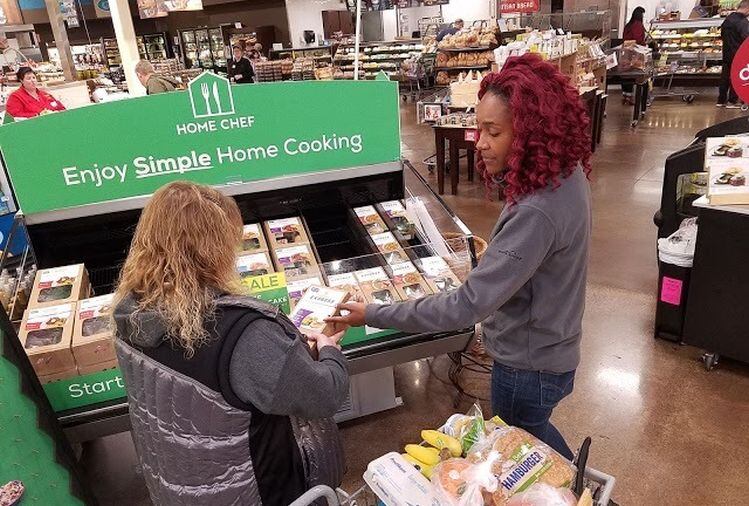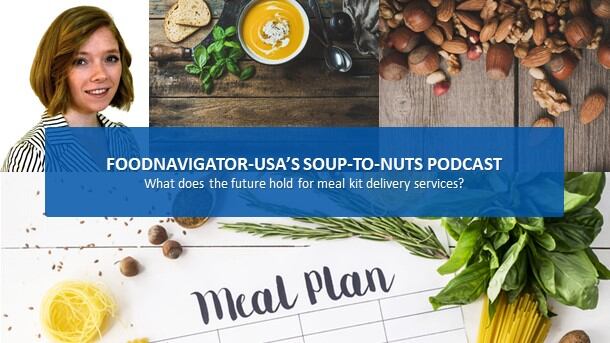Speaking to FoodNavigator-USA just over a year after Kroger completed its deal to acquire Home Chef, DeNardis said: “What we’re really excited about as we roll out some of our new products, is the ability of our in-store business to become even as big as our ecommerce business in pretty short order.”
Asked about merchandising meal kits in stores, he said: "The biggest learning for us is trying to make sure that they are highly visible as this is still a relatively new product for customers in stores, so where we’ve been most successful is in stores where we’ve been the most visible in things like standalone chillers that are low to the ground so customers can see the product from the top down.
“We’ve also done better in places where people are willing to pay a premium. The shopper we resonate with is less price sensitive, but also a highly valuable shopper to Kroger generally.”
Expanding and evolving the in-store assortment and pricing
He added: “One thing we’re doing to expand our addressable market in Kroger is to offer a broader range of products that have a variety of price points, so for example we’re piloting in about 70 stores ready to heat items that are closer to a sub $10-price point whereas our meal kits are closer to $15.
“A traditional meal kit typically requires 30-40 minutes of active cook time whereas the new ready to heat and our new oven ready meals require much less active cooking time, so ready to heat is ready to be placed in the oven or microwave and warmed up, while our oven ready meals are essentially raw ingredients – closer to a meal kit – delivered in a tin requiring maybe five minutes of prep time, and then you put it in the oven and it cooks in about 25-30 minutes.”
The shrink challenge with in-store meal kits
Asked about the shrink challenge with in-store meal kits, which are high-ticket items with a relatively short shelf-life (around P+7) - not a winning combination if you don’t manage to keep tight control of demand planning – he said:
“We’ve spent a lot of time with Kroger trying to minimize the time the product spends in transit through things like cross-docking, and leveraging some of their fresh kitchen deliveries that go to stores on a daily basis, so once it arrives in store it has as much shelf-life as possible.”
Asked if Home Chef might trial something along the lines of Blue Apron’s Knick Knacks range, which comprises pre-portioned spices, sauces, grains, and dairy ingredients that shoppers then pair with meat/protein and fresh produce, he said: “Certainly it’s something we might pursue in future.”
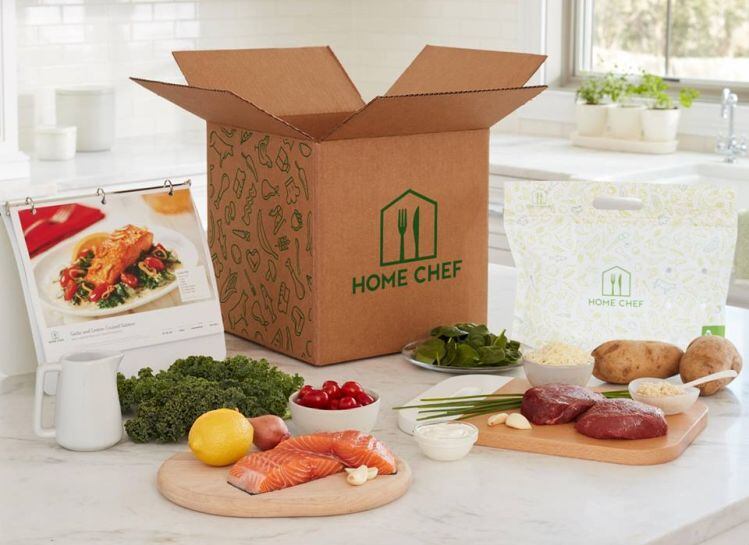
We’ve continued to grow our ecommerce business
Aside from developing retail kits for Kroger, Home Chef is also promoting its online subscription-based home delivery business in Kroger stores and through Kroger’s marketing emails, circulars and so on, said DeNardis.
He was not able to share any figures now that Home Chef is part of Kroger, but said: “We’ve continued to grow our ecommerce business, as there’s a different shopper we’re reaching online. Many of our subscription customers say the meaningful part of what we’re providing is the convenience of the home delivery.
“But one of the things we always knew was a bit of a limitation was that folks have to know what they are willing to order for the following week and that that they will be home and willing to cook with Home Chef at least a couple of nights that week.”
For customers that like cooking with Home Chef but don’t want to commit to a subscription, he added, in-store kits provide an immediate answer to the ‘what’s for dinner tonight?’ question.
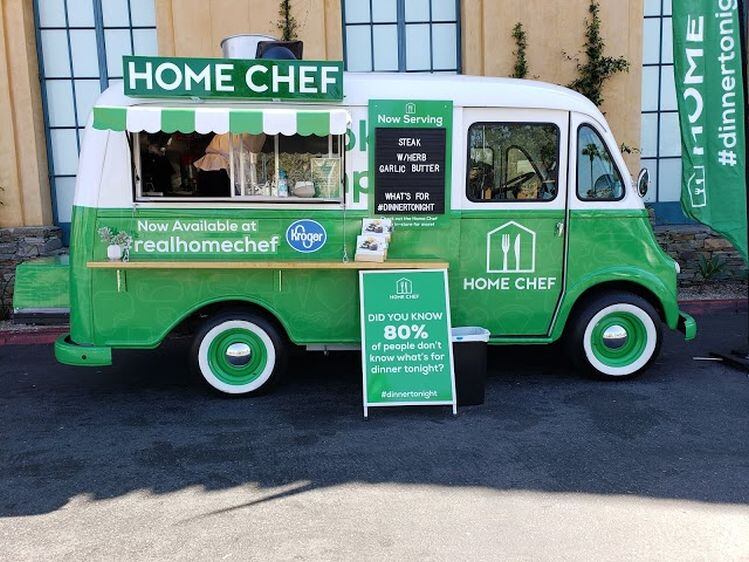
Avoiding spray and pray marketing tactics
Asked about customer acquisition – an area in which many meal kit companies have invested huge sums with mixed returns – he added: “We’ve tried to shy away from some of the more traditional top of the funnel spray and pray marketing tactics, and been more focused on driving ROI from our marketing dollars – so it's less about building a brand and more on targeted customer acquisition; we’ve been very disciplined.
“We’ve learned pretty early on that our demographic skews a little older, 35-54, with pretty good distribution across urban, suburban and rural areas, and typically two-income households.”
Doubling down on customization
As for customer retention, he said, “We’ve done a lot of work to develop a differentiated customer experience, and from day one we recognized that variety is a key driver for trial and retention, so one of the things we’ve done is to double down on customization. So as a Home Chef ecommerce customer you can log into your account and if we’re serving a dish with chicken you can easily swop to pork, for example as we offer 15 unique proteins. Or you can upgrade, to say, an organic protein.
“We also collect thousands of data points from customers that give ratings and comments to all of our meals to understand what works and what doesn’t. We also partner with some of our highest quality [most loyal] customers and send them beta versions of meals we’re thinking of running on future menus to get their feedback.”
The “biggest thing we hear [when Home Chef asks subscribers why they quit] is the same as with any service,” he claimed. “It’s expense and lifestyle reasons. Our ecommerce customers need to be willing to cook with us two to three times a week and that doesn’t always fit with people’s lifestyles.”
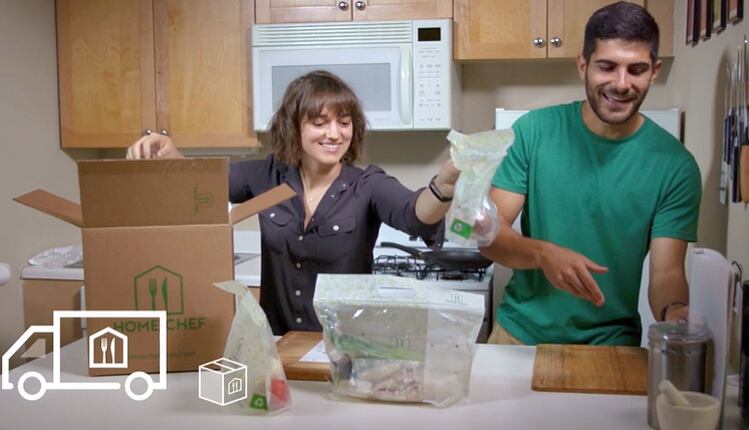
Will GrubHub kill off meal kits?
Asked whether the emergence of services such as UberEats and GrubHub enabling consumers to order pre-prepared meals in 20 minutes from thousands of restaurants with no commitment could be the death knell of meal kits, he said:
“People still want to put a home cooked meal on the table. We’ve done some research on where customers are spending their dollars when they are not cooking with us and it tends to me more on traditional grocery than on take out or meal delivery.”

